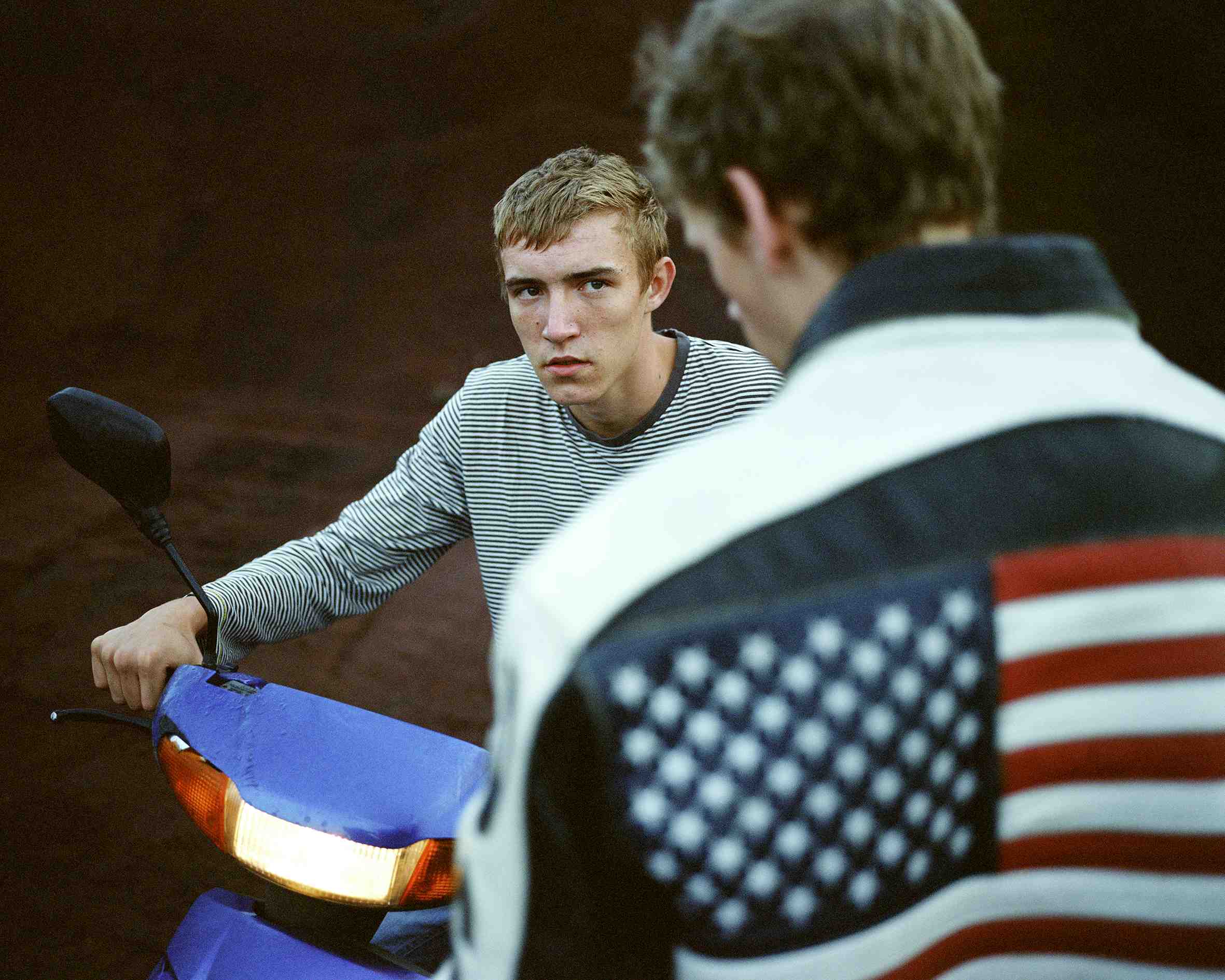Coming of age in a small Polish town in the ‘90s
- Text by Miss Rosen
- Photography by Michal Solarski and Tomasz Liboska

Nestled in southern Poland near the Czech Republic lies Goleszów, a small town of just 4,000 residents. “It’s not a patch of dirt where nothing ever happens, but neither is it a city that offers forbidden fruit,” say photographers Michal Solarski and Tomasz Liboska, who have been friends since childhood.
In the new book, Cut it Short (Kehrer), the duo document the town of their youth in the 1990s for a coming-of-age story drawn directly from their lives. The book takes its title from Postrzyzyny, the Slavic tradition wherein young boys cut their hair to enter society as men – a symbol of conformity that is still practiced in some places.

In keeping with the spirit of a post-Soviet world, Solarski and Liboska were rebels, uninterested in playing by the rules. “The Iron Curtain fell and it meant that Poland would soon become a part of the West,” they say. “We could finally watch MTV, Hollywood films and get access to many other pop culture attractions that were out of our reach before. We wanted to play music, keep long hair, and wear worn out jeans.”
Inspired by grunge, Solarski and Liboska decided to start a band that would allow them to blow off some steam. “Times were intense. We tried anything off limits. We were rebellious at home and at school, fighting the boredom of a small town. Somewhere in the middle of all that, the most important battle was being fought – to finally get laid,” they say.


“Music was a way to escape. We dreamt of big stages and fame. We wanted to be like Kurt Cobain. We wanted to play laud and heavy. Sadly, our first rehearsal ended up with a short circuit and we had to face a brutal truth – maybe we just didn’t have a flair for it… the final blow happened when we failed to agree on a band name.”
Too young to participate in the Solidarity movement, Solarski and Liboska saw what was happening to the country after laving the Eastern Bloc. “The euphoria after the [Soviet] system collapsed soon was cooled down by countless problems of the transformation period with hyper inflation and massive unemployment that Poles had to face. But truth be told we all could feel that times were changing.”

Although Solarski and Liboska would take different paths in life, however, they both became photographers and remained close friends. They later decided to collaborate on Cut It Short and returned to Goleszów, where both of their families still live.
“We visit them regularly on different occasions, but only when we started to work on our project did we really feel we were back. We took time to revisit places that evoke strongest memories and emotions. Some changed beyond recognition, some remained exactly as we remembered them,” they say.
“Every day of shooting was an adventure. We felt like kids again. One thing is certain, the whole process was very special to us, perhaps more important than the final product.”




Cut it Short is out now on Kehrer.
Enjoyed this article? Like Huck on Facebook or follow us on Twitter and Instagram.
Follow Miss Rosen on Twitter.
Latest on Huck

Maryam El Gardoum is breaking new shores for Morocco’s indigenous surfers
The Amazigh Atlantic — Through her groundbreaking career and popular surf school, the five-time Moroccan champion is helping women find their places in the waves.
Written by: Sam Haddad

Youth violence’s rise is deeply concerning, but mass hysteria doesn’t help
Safe — On Knife Crime Awareness Week, writer, podcaster and youth worker Ciaran Thapar reflects on the presence of violent content online, growing awareness about the need for action, and the two decades since Saul Dibb’s Bullet Boy.
Written by: Ciaran Thapar

Volcom teams up with Bob Mollema for the latest in its Featured Artist Series
True to This — The boardsports lifestyle brand will host an art show in Biarritz to celebrate the Dutch illustrators’ second capsule collection.
Written by: Huck

A visual trip through 100 years of New York’s LGBTQ+ spaces
Queer Happened Here — A new book from historian and writer Marc Zinaman maps scores of Manhattan’s queer venues and informal meeting places, documenting the city’s long LGBTQ+ history in the process.
Written by: Isaac Muk

Nostalgic photos of everyday life in ’70s San Francisco
A Fearless Eye — Having moved to the Bay Area in 1969, Barbara Ramos spent days wandering its streets, photographing its landscape and characters. In the process she captured a city in flux, as its burgeoning countercultural youth movement crossed with longtime residents.
Written by: Miss Rosen

Tony Njoku: ‘I wanted to see Black artists living my dream’
What Made Me — In this series, we ask artists and rebels about the forces and experiences that shaped who they are. Today, it’s avant-garde electronic and classical music hybridist Tony Njoku.
Written by: Tony Njoku

